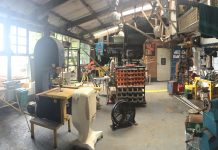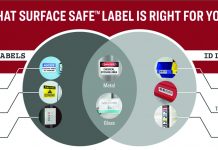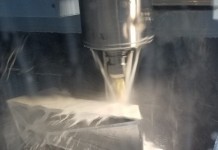
The first half of 2015 exceeded everyone’s expectations. Capital investments, the acquisition of value-added equipment, known to be a strong indicator of manufacturing industry performance reached a high a full 8% ahead of the same time in 2014 in July of this year (ELFA – www.elfaonline.org). However, the remainder of the year has seen a slight cooling of the industry which, only recently, appeared to be heading for a boom.
A number of political factors cannot be ignored when considering the behavior of the sector. The looming Trans Pacific Partnership (TPP), a free trade agreement among the United States and a number of Asian and South American nations, and on an unprecedented scale, seems likely to be signed into law. Negotiated largely in secrecy, the TPP is poorly understood by most, but will undoubtedly serve to reduce protections on American manufactures by reducing tariffs and trade barriers. When we surveyed American companies in July of this year, several respondents cited already weak market protections as an inhibitor to their future success. This trade agreement is also likely to further incentivize companies to outsource production work to other TPP member nations. Considering the size and complexity of the TPP, its effects can hardly be predicted at this juncture, but uncertainty beckons cautious behavior.
Also in the past six months, the Federal Reserve has demonstrated ongoing interest in increasing interest rates. While no rate hikes have been implemented yet, the Fed seems to be waiting for the right moment to act. Increased borrowing rates will make new capital acquisitions more costly and less appealing.
What is clear is that manufacturing enterprises are being prudent in the face of uncertainty, behavior learned the hard way in the lengthy and perilous recession that has become the face of the post 9/11 world. Despite all of this, manufacturers continue to show optimism.
Results of a survey of midsize manufacturers conducted by Prime Advantage, a major buying consortium for midsized manufacturers, were announced in mid-September. The fourteenth edition of the Purchasing and Manufacturing Survey provide first-hand insight into financial projections and procurement insight into more than 750 US manufacturing companies. The results show continued optimism about revenues and employment as well as increasing demand for flexibility and responsiveness in supply chains. Confidence in growing revenues extends into 2016, according to the study.
Summary of findings
• Eighty percent of respondents expect to be at or above previous year’s revenues, and 83 percent anticipate maintaining or increasing revenue performance in 2016.
• Eighty-four percent of the buying group’s members are prioritizing indirect spend to control costs.
• Hiring is strong, as 61 percent of members planned to hire new employees in 2015.
• A lack of qualified workers remains the top threat to manufacturing growth among members for the second consecutive year, with 46 percent voicing this concern, down from 53 percent in 2014.
• The three most desired traits for potential procurement hires are: analytical skills, negotiation expertise and a strong acumen for relationship management.
Revenues look to remain strong for the rest of 2015
After several consecutive years of climbing revenues, some manufacturing companies are starting to temper expectations. Eighty percent of respondents expect to be at or above the previous year’s revenues. Although this remains a significant portion, it is the lowest percentage of optimists in this category since 2010. With demand decreasing for some members, 27 percent reported that they are currently performing below forecast for 2015. This slowdown may be temporary, as 83 percent of members expect to either maintain or increase revenue performance in 2016. Respondents currently enjoying revenue upswings largely credit new product lines and new customers for the growth.
Capital expenditures holding steady
Manufacturers remain optimistic about investment in their operations as 87 percent of respondents are either meeting or exceeding capital expenditure plans for 2015, with 73 percent expecting current trends to continue throughout the remainder of the year.
Cost pressures threaten bottom line
Once again, raw materials top the list of leading cost pressures for procurement professionals. Indirect materials and supplies, as well as component parts pricing, have also been significant margin-threatening factors for manufacturers this year.
Employment outlook is promising
Manufacturers continue to hire as 61 percent of members went into 2015 planning to add new employees; with 79 percent of those having already fulfilled this mission. This positive trend looks to continue for the remainder of the year, as no respondents are expecting layoffs and 47 percent expect to bring on additional employees. This result is consistent with the PwC Manufacturing Barometer’s findings.
“The survey results are extremely encouraging. The majority of our members continue to achieve strong revenues and growth, even after concluding a string of very prosperous years,” said Louise O’Sullivan, founder, president and CEO of Prime Advantage. “Our members are developing new products to increase demand like never before and the power of our group intensifies every single year.”
Methodology
Each year, using an online survey platform, Prime Advantage surveys a cross section of purchasing executives and professionals from its member companies. The latest survey data was collected in July 2015 from representatives of Prime Advantage Member companies in durable goods manufacturing, with annual revenues ranging between $10 million and $4 billion, of which the majority range between $20 million and $500 million. The survey had 77 supply chain professionals participate. They represent U.S.-based manufacturers in more than 25 different industries, including commercial food service equipment, packaging, truck and trailer, material handling, food processing, and construction equipment. Prime Advantage has polled its membership for their impressions of current economic conditions since February 2008.
About Prime Advantage
Founded in 1997, Prime Advantage is a buying consortium for manufacturers with more than 750 member companies and more than 125 Endorsed Suppliers. In the past 18 years, Prime Advantage has paid more than $172,000,000 in rebates and discounts to its manufacturing industry members.
For more information on Prime Advantage visit:
www.primeadvantage.com.
To view a complete report on the survey visit:
www.primeadvantage.com/surveys.













